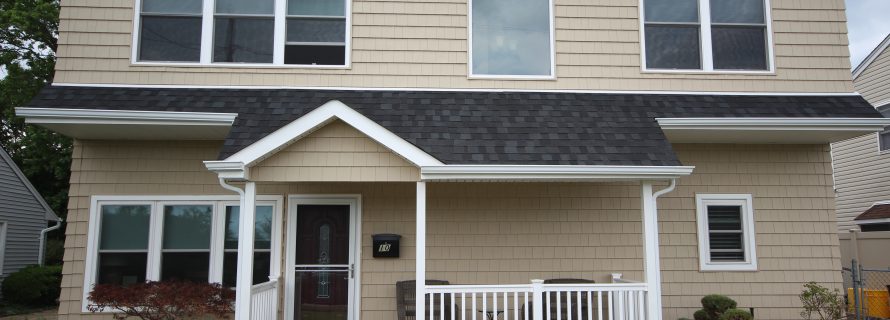Fiber Cement

Fiber cement is a composite material made of sand, cement and cellulose fibers. In appearance fiber cement siding most often consists of overlapping horizontal boards, imitating wooden siding, clapboard and imitation shingles. Fiber cement siding is also manufactured in a sheet form and is used not only as cladding but is also commonly used as a soffit/eave lining and as a tile underlay on decks and in bathrooms. siding is not only used as an exterior siding, it can also be utilized as a substitute for timber fascias and barge boards in high fire areas. CertainTeed Fiber Cement Siding uses a multi-step high-pressure process combining Portland cement, fly ash, wood fiber and specialty additives. CertainTeed’s proprietary Fiber Cement formula contains more than 30% post-industrial material. By incorporating this post-industrial by-product into its Fiber Cement formula it reduces landfill waste, requires less energy to produce, transport and install all positives for the environment.
Advantages of Fiber Cement as a Wood Alternative Siding
Many building and design professionals and homeowners are looking for siding with the natural appearance of brick, stone, or wood. However, brick and stone can be expensive, engineered wood can suffer from performance problems, and solid wood requires significant maintenance. Without regular upkeep, wood-based products can become brittle, split, swell and deteriorate over time. A wood alternative siding such as fiber cement siding is able to match the traditional look of wood, with substantially lower maintenance expenses. It is extremely durable, dimensionally stable, and resistant to everyday dings. As is the case for natural wood, fiber cement must be primed and painted or stained. However, the material’s superior paint adherence properties reduce the frequency of re-coating. The only additional maintenance required is simple cleaning; the exterior may be washed with a garden hose to remove dirt and debris as necessary. Although a wood alternative siding like fiber cement mimics the traditional appearance of wood, its physical properties provide several advantages. All wood and wood-based products absorb water when exposed to moisture; the ensuing expansion places continuous stress on the material over time. More importantly, the subsequent growth of internal mold and fungus can foster decay that goes unnoticed until the damage requires expensive replacement. In comparison, fiber cement does not experience this type of swelling and warping and does not rot. The product also remains impervious to woodpeckers or wood-boring insects. Fiber cement resists the damaging effects of salt spray and ultraviolet (UV) rays and does not succumb to the stress of freeze-thaw cycles. Another important attribute that sometimes goes unnoticed is the material’s non-combustibility – an especially important feature when considering siding products in locations where fire hazards are a concern. Due to its superior durability and resistance to damage from extreme weather conditions, the material can be used in virtually any climate.
What is the best home improvement for my money?
Learn why Remodeling Magazine says fiber cement siding is the best investment for your home. Of the 33 home improvement categories on the Upscale Project List of $1,200 or more, Fiber Cement Siding is #1 for return on investment. Learn about ROI, curb appeal and the finest fiber cement siding you can buy.
- Additions and New Construction
- All Exteriors
- Alterations
- Basements
- Bathrooms
- Customer Service
- Customer Stories
- Decks
- Design & Planning Show
- DIY
- Doors
- Educational Resources
- Extreme Makeover Home Edition
- Fashion Show
- General Remodeling
- Green Living
- Handyman Home Services
- Home Decor
- Home Entertainment
- Home Improvement
- Home Improvements
- How to Tips
- In The Community
- Off-the-Wall Remodeling Stories
- Remodeling
- Resources
- Roofing
- Siding
- Social Media
- Sunrooms
- Tips & Tricks
- Trends
- Windows

